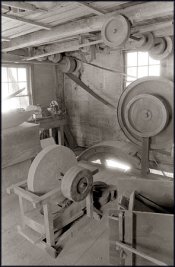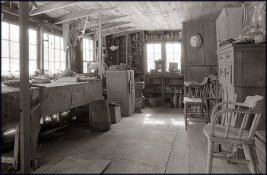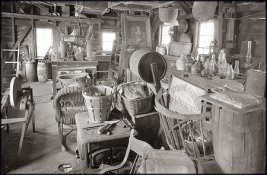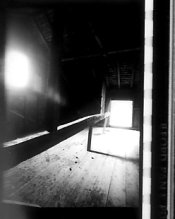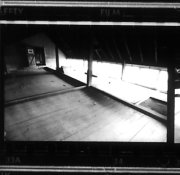It seems that this is as good a point as any to talk about the effects of pre-exposing film to non-image bearing light.
There are basically two ways of compressing an excessive scene brightness ratio. The one that is used most often is altered development...by that I mean altered developer choices, dilutions, agitations, and times... Since development affects negative high density regions more then the low density ranges the effect is one of compressed highlight tonal scale. Taking this in an extreme situation as what this thread began with the effects will be highlight values that are lumped together without adequate separation
The other way of compressing an excessive scene brightness ratio is to alter exposure. By giving the film a pre- exposure to non-image bearing light we maintain our highlight tonal separation and we support shadow values by compressing them upward.
The process by which this is accomplished is to meter the scene through a diffusion panel (I use 1/8 inch opaque acrylic). I first give the film a pre-exposure by placing this diffusion panel over the lens and exposing at a Zone II to Zone IV exposure. This pre-exposure will depend on the amount of compression required. Then I next remove the diffusion panel and give a normal exposure for the second exposure...metering and placing the highlights at a Zone VIII exposure value for this second exposure...If you use this procedure, it is vitally important to place the highlights and don't worry about shadow placement...the pre-exposure has already accomplished this.
The effects of this can be seen when we assign a numerical value to each zone of exposure. Beginning by giving a Zone I a value of one and Zone II a value of two..Zone III would then have a value of eight and Zone IV would have a value of sixteen. We would have a Zone VIII numerical value of 256 since subsequent Zones represent stops of exposure and hence a doubling of numerical value.
The effects of preexposure can be seen by drawing up tables depicting normal and normal plus pre-exposure. Taking and example of a Zone III preexposure we can see that we are adding eight units of exposure to the entire film. This represents a proportionally higher value to the lower density regions then it does to the higher density regions.
This is a much more predictable and much more desireable practice, in my experience, when one encounters extreme scene brightness ratios.











